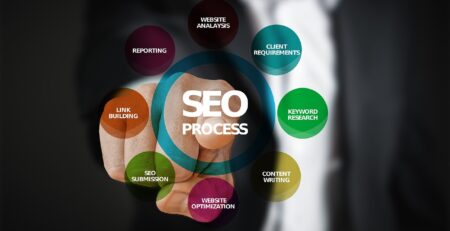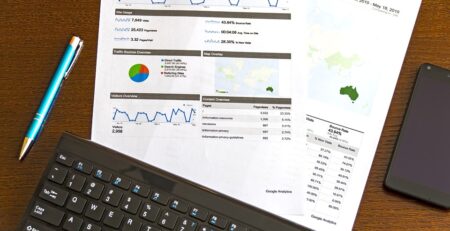Search engine optimization (SEO) is a crucial factor in driving traffic to your website. On-page SEO, in particular, plays a significant role in improving your website’s search engine rankings and increasing organic traffic. In this comprehensive guide, we will delve into the intricacies of on-page SEO and provide you with actionable strategies to master it for skyrocketing your website traffic.
Understanding On-Page SEO
On-page SEO refers to the optimization of individual web pages in order to rank higher and earn more relevant traffic in search engines. It involves optimizing both the content and HTML source code of a page, including the use of targeted keywords, meta tags, and internal linking. By focusing on on-page SEO, you can improve the user experience, relevance, and authority of your website, making it more attractive to search engines like Google, Bing, and Yahoo.
Key Elements of On-Page SEO
There are several key elements of on-page SEO that you should pay close attention to:
- Title Tag: The title tag is an HTML element that specifies the title of a web page. It should accurately describe the content of the page and include relevant keywords.
- Meta Description: The meta description is a brief summary of the content of a web page. It appears in search engine results and influences the click-through rate. It should be compelling and include relevant keywords.
- Heading Tags: Heading tags (H1, H2, H3, etc.) are used to structure the content of a page. They help search engines understand the hierarchical structure of the content and should include relevant keywords.
- Keyword Optimization: Incorporating targeted keywords naturally throughout the content, headings, and meta tags is crucial for on-page SEO. However, keyword stuffing should be avoided.
- Image Optimization: Optimizing images with descriptive file names and alt text can improve the accessibility and relevance of your content.
- Internal Linking: Internal links help search engines navigate and index your website, while also distributing page authority and directing visitors to relevant content.
- Page Loading Speed: A fast-loading website not only improves user experience but also contributes to higher search engine rankings.
Mastering On-Page SEO
Now that you have a good understanding of the key elements of on-page SEO, let’s explore some actionable strategies to master it for skyrocketing your website traffic:
1. Conduct Thorough Keyword Research
Keyword research is the foundation of successful on-page SEO. Identify relevant keywords and long-tail phrases that have substantial search volume and align with your content. Tools like Google Keyword Planner, SEMrush, and Ahrefs can assist you in discovering valuable keywords for optimization.
2. Optimize Your Title Tags and Meta Descriptions
Create compelling and keyword-rich title tags and meta descriptions for each web page. Craft unique, descriptive, and relevant meta tags that entice users to click through to your website from search results.
3. Create High-Quality, Relevant Content
Content is king in the realm of on-page SEO. Develop high-quality, relevant, and engaging content that addresses the needs of your target audience. Ensure that your content is well-structured, informative, and incorporates your targeted keywords naturally.
4. Optimize Your Heading Tags and Body Content
Utilize heading tags to organize your content hierarchically and include relevant keywords. Additionally, optimize the body content of your web pages by integrating your target keywords judiciously and maintaining a natural flow of language.
5. Leverage Internal Linking and Site Structure
Implement a strategic internal linking strategy to establish a logical site structure and guide users and search engines to relevant content. Interconnect your web pages using descriptive anchor text to enhance the accessibility and authority of your website.
6. Optimize Your Images for SEO
Optimize your images by utilizing descriptive file names and adding alt text that includes relevant keywords. This not only enhances the accessibility of your content for visually impaired users but also contributes to improved search engine rankings.
7. Improve Page Loading Speed
Enhance the loading speed of your web pages by optimizing images, leveraging browser caching, minifying CSS and JavaScript files, and utilizing content delivery networks (CDNs). A swift-loading website enhances user experience and positively impacts SEO.
8. Focus on Mobile Optimization
Given the increasing prevalence of mobile usage, it is imperative to ensure that your website is mobile-friendly and optimized for various devices. Mobile optimization is a critical factor in on-page SEO and can significantly impact your search engine rankings.
Conclusion
Mastering on-page SEO is essential for maximizing your website’s visibility, attracting organic traffic, and achieving sustainable growth. By understanding and implementing the key elements and strategies of on-page SEO, you can optimize your web pages for improved search engine rankings, user experience, and overall performance. Follow the guidelines outlined in this comprehensive guide to crack the code of on-page SEO and propel your website towards success.
FAQs (Frequently Asked Questions)
Q: How long does it take to see results from on-page SEO?
A: The time it takes to see noticeable results from on-page SEO can vary based on factors such as the competitiveness of your industry, the quality of your content, and the effectiveness of your optimization efforts. While some improvements may be visible in a matter of weeks, substantial progress often takes several months to materialize.
Q: Is on-page SEO more important than off-page SEO?
A: Both on-page and off-page SEO are crucial components of a holistic SEO strategy. While on-page SEO focuses on optimizing individual web pages for search engines, off-page SEO involves external factors such as backlinks and social signals. Both aspects complement each other and contribute to overall search engine rankings and website authority.
Q: What are the best tools for on-page SEO analysis?
A: There are several tools that can assist in on-page SEO analysis, including but not limited to Google Search Console, SEMrush, Moz Pro, Ahrefs, and Screaming Frog SEO Spider. These tools provide valuable insights into keyword performance, on-page optimization, technical issues, and more, enabling you to make informed decisions for improving your website’s SEO.











Leave a Reply